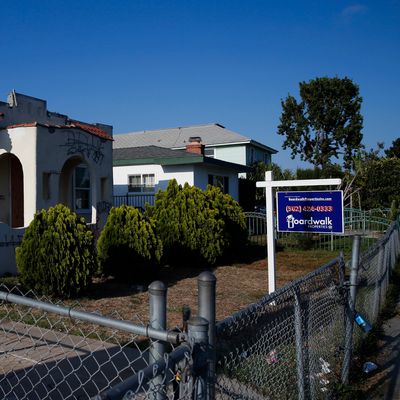
As you may have noticed, the president, his hirelings, and his media peanut gallery are hyping positive microeconomic indicators as often as they possibly can.
But while perceptions of the economy have been improving lately, it’s also clear that the stock market, growth, and unemployment statistics mask a great deal of microeconomic struggle and insecurity. Georgetown political scientist John Sides and the Public Religion Research Institute’s Robert Griffin reported today on a new study that illustrates these shadows in all the economic sunshine:
A sample of 6,000 Americans told us whether they had experienced a variety of negative financial events over the last year — including a drop in income, a job loss, or difficulty paying monthly bills. They also reported whether they had savings and felt financially prepared for the unexpected, as well as their overall feelings about their finances, job, income, savings and debt. Answers to these questions were only weakly associated with people’s identity as Democrats or Republicans and therefore better captured their true economic situation …
About one in five were somewhat or very dissatisfied with their income and 25 percent reported a drop in their income in the previous year. Savings were a real concern: 33 percent said that they did not have any savings and 40 percent were dissatisfied with their savings. Nearly half (47 percent) said that they were not very or not at all financially prepared for the unexpected.
The researchers created an index of economic distress in which the average score for Americans was 29. And the clear finding was that nonwhite Americans are still suffering from disproportionate distress:
In reality, it is people of color who report the most distress — a fact that is not surprising but stands out clearly in the new data. Hispanic-Americans without a college degree averaged 37 on this index and African-Americans without a college degree averaged 32. In fact, African-Americans with a college degree reported slightly more distress (30, on average) than whites without a college degree.
This pattern was evident at every income level. Nonwhites with the same household income as whites still reported more economic distress. This was true even when comparing nonwhites with college degrees to whites without college degrees.
Trump does not seem to grasp this basic reality:
But while the study found that 2016 Trump voters — including white working-class Trump voters — are at or below the national average for economic distress, those that are feeling the pain are not happy with him.
Republicans who reported high levels of distress were 10 percentage points less likely to approve of Mr. Trump, compared with those with low levels of distress. Among independents, economic distress was associated with a steeper 17-point drop in approval. In other words, economic distress is doing what it typically does in American politics: serve as a referendum on the incumbent president.
Obviously, not everyone who is doing well economically approves of Donald Trump’s job performance, as his weak standing with college-educated voters — particularly women — shows. But his apparent belief that the strong economy he inherited from Barack Obama is lifting all boats isn’t right. And thus the economic statistics he loves to cite are only a part of the picture in a country where inequality blights every gain, and the party of the more fortunate cannot expect gratitude from those left in distress.






























